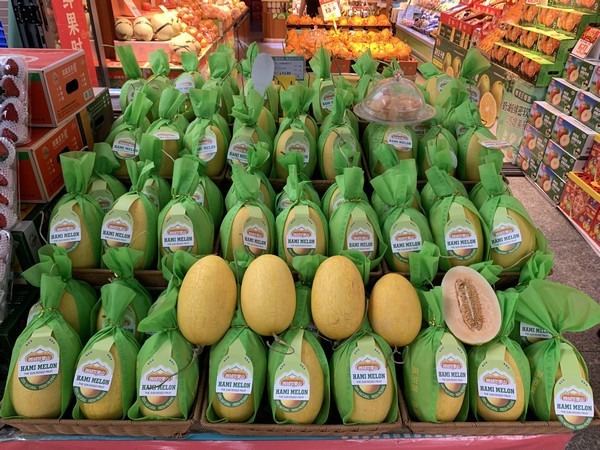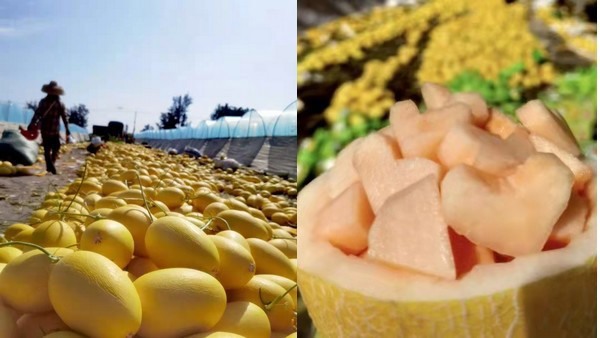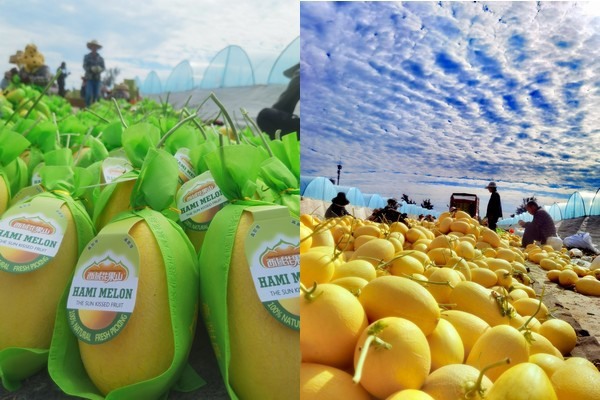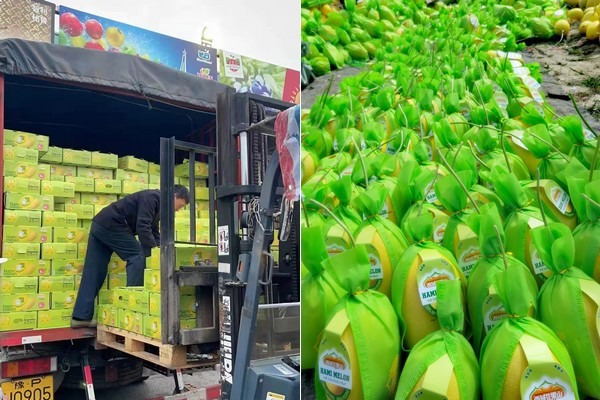This year the weather conditions in Hami melon production areas were better than last year. The arid weather is excellent for Hami melon growth. Well-managed plantations with suitable plantation technologies enjoyed an exceptional harvest this year. Manager Wang, spokesperson for Korla Western Region Mountain of Flowers and Fruit Specialized Agricultural Cooperation, recently shared insight into conditions in production areas and the retail market.
Nearly all Hami melons currently in the market come from production areas in Xinjiang, Gansu, and Inner Mongolia. Hami melons from Xinjiang entered the market two months ago, but Hami melons from Gansu and Inner Mongolia only just entered the market. Even though Xinjiang Hami melons enjoyed high temperatures earlier in the season, their product quality and flavor is not as good as in previous years. More recently the product quality and flavor improved a lot.

"The overall surface area devoted to economic crops in Xinjiang shrunk in the last two years, because of new policies on food security and irrigation. The overall surface area devoted to Hami melon plantation is much smaller now. The price has gone up since the supply volume declined. However, the market is also weaker because of the ongoing pandemic and consumer power has taken a hit. This has forced prices to come down. These developments in production areas and retail markets create a contradictory situation, which is a huge challenge for traders in the middle. Companies without strong brands or loyal clients suffer the most."
"Some new suppliers have appeared in Ningxia, now that the overall surface area devoted to Hami melon plantation in Xinjiang and Inner Mongolia declined. However, Hami melon plantation in Ningxia is rather small scale. Some farmers have now begun to construct greenhouses for Hami melon plantation in Ningxia."

The Hami melon market is chaotic because of the ongoing pandemic and the weakened economy. The market price dropped by 10%-20% compared to last year. According to manager Wang, the market price of Hami melons is primarily based on product quality and brand. But the decisive factor for consumers is flavor.
"The flavor of Hami melons depends on plantation management, irrigation and fertilization, ripeness during harvest, speed of distribution, etc." The flavor of Hami melons affects their target audience and market positioning. As the disposable income of consumers grows, their preference leans towards premium products. "Netted Hami melons have become a high-end market product. These sweet Hami melons quickly grow more popular and more familiar," said manager Wang. "High-quality fruits are always in demand."

When asked about predictions for the next few weeks, manager Wang replied, "I think that the price will not fluctuate much in the next few weeks. However, when Mid-Autumn Festival [10 September, 2022] arrives, demand grows, and that will have an impact on the price."
"Hami melon sales used to only take place in summer, but the Hami melon has grown from a seasonal fruit to a commonly-seen fruit like apples, pears, and watermelons. Consumers enjoy Hami melons. Plantation management and plantation technology levels improved, and Hami melons are now available all year long."

Kurla Western Region Mountain of Flowers and Fruit has Hami melon plantations in Hainan, Shandong, and Anhui. "The Hami melon harvest in Xinjiang begins every year in June, and they are sold as they are harvested. Hami melon supply from Xinjiang continues until late September. Hami melons from Hainan enter the market in early October. We adjust our sales strategies on the basis of different production areas and the different costs involved. We also develop new product varieties to complement the losses from a weak market," said manager Wang.
For more information:
Ms. Wang Qi - Manager
Kurla Western Region Mountain of Flowers and Fruit Specialized Agricultural Cooperation
Shenzhen City Western Region Mountain of Flowers and Fruit Agricultural Product Development Co., Ltd.
Tel.: (+86) 136 0269 3566
E-mail: 635929063@qq.com
